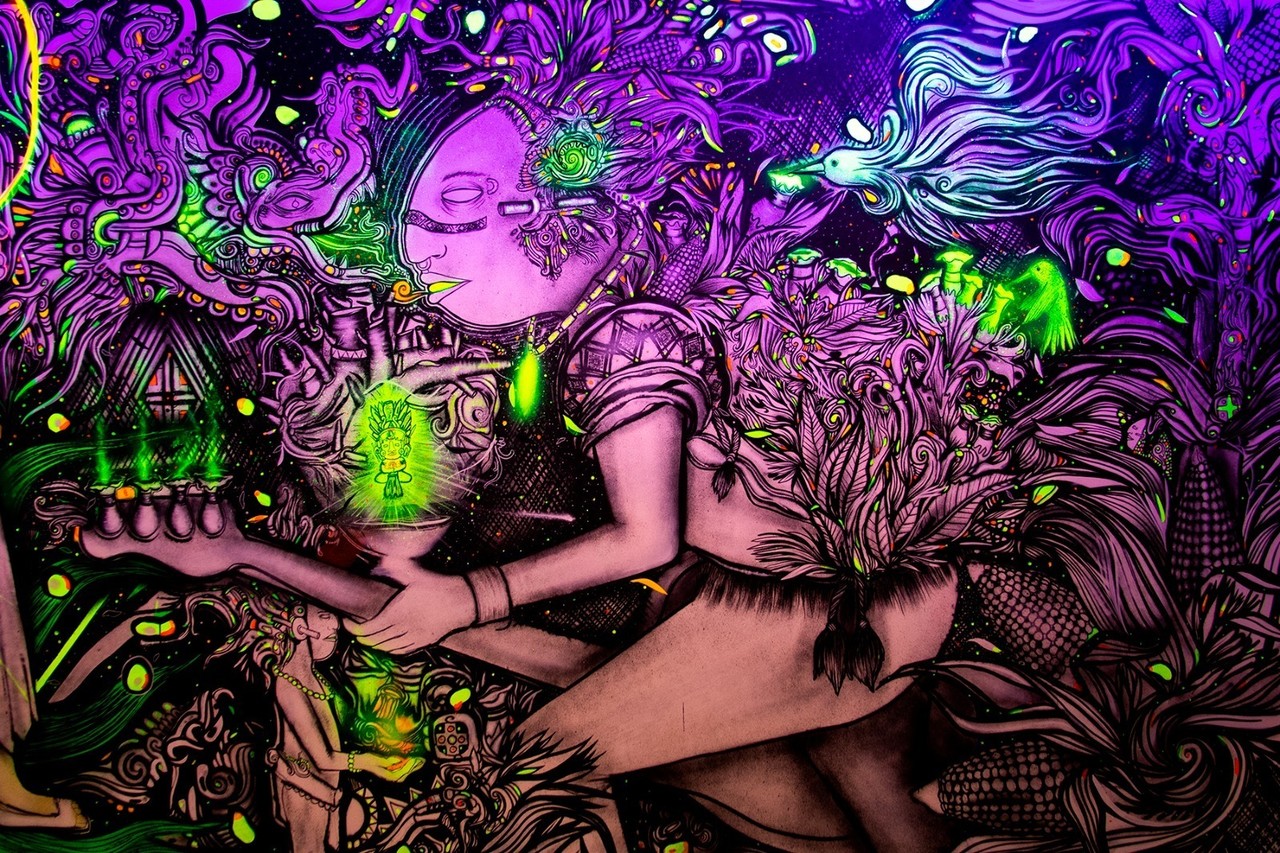MEXICO CITY.- The Colegio de San Ildefonso continues its exploration of the muralist movement with the habilitation of room 21 Muralismo y Resistencia, which was part of the exhibition The spirit of 22: a century of muralism in San Ildefonso, and in which young artists capture themes and contemporary mural aesthetics
A look at the Mayan reality traced by the young artist of Tzotzil origin Dyg’Nojoch, is added to the exhibition The spirit of 22: a century of muralism in San Ildefonso with the inauguration of the mural ‘Muk´Ta Luch’ (which in Mayan means Fabric or Creation of the universe) that is exhibited in room 21 ‘Muralism and Resistance’, until March of next year.
‘For me, resistance is in creation, when you work on a large scale you resist the sun, the rain, the cold, going up and down from scaffolding, but also when I got here and saw the murals I realized that the importance of the murals are not only the technique but the message it gives to the community’, the graphic designer by profession, painter and graffiti muralist shared in an interview.
The Antiguo Colegio de San Ildefonso houses the murals that emerged during the post-revolutionary era in 1922, with the purpose of illustrating Mexican history and identity through images in public spaces. Thanks to this, this venue has an important historical and artistic heritage on its walls, with artists such as Diego Rivera, David Alfaro Siqueiros, José Clemente Orozco, Fermín Revueltas, Jean Charlot, Fernando Leal and Ramón Alva de la Canal, who, through invitation of José Vasconcelos, then Secretary of Public Education, embodied transcendental images in the then National Preparatory School.
To continue with this exploration, the university campus, at the time of the exhibition The spirit of 22, a century of muralism in San Ildefonso, created a space where new perspectives are found and the creation of critical, innovative and inclusive proposals is encouraged. through room 21, Muralismo y Resistencia, a project that recreates a new muralism, with the participation of Paola Delfín and Pilar Cárdenas (Fusca) at first; then with Baltazar Castellano Melo (together with the Raíz de la Ceiba Collective, Olga Manzano and José Luis Hernández Guzmán, supported by students from the UNAM Faculty of Arts and Design), as well as a new generation of artists who reinterpret and dialogue with the great muralist masters of the 20th century and their legacy.
The mural by the Chiapas artist Dyg’Nojoch, (Jorge Abel Pérez), a native of the Mexican southeast, where borders disappear and native peoples claim their history and memory, is recently integrated into this proposal. This young man of Totsil origin, a graphic designer from the Yabteclum community, Chenalhó, Chiapas, develops his artistic work as a chronicler and witness to the traditions of his ancestors, but at the same time tries to confront postmodernity with the myths and epics of the worldview. Maya configuring an indigenous resistance from muralism.
“The importance of fluorescent colors for me gives them this energy that we have in our rituals, that sacred value of our worldviews that is not seen but is felt,” added the artist who addresses spirituality in his work, the struggle of peoples natives, social issues, mythical characters and organic forms; embodied in beings of flora and fauna, complemented with Mayan symbology in a cheerful and colorful way.
Dyg’Nojoch takes his name from a play on words devised by himself, where Dyg is a variation of iik which in Tzotzil is “night” or “darkness” and nojoch “greatest”, or which for the artist refers to the beauty of the night sky, which in his own words represents a “place where life inhabits.”
The Zapatista movement raised in 1994 and that the artist portrays in his mural, proposes the rescue of the ancient Mayan knowledge, as well as understanding who we are, where we come from and thus reaffirming the memory and language of our ancestors today.
The work, among other elements, integrates two characters from Acteal, including a young woman with a baton; to a jaguar that gives mythical meaning to the warrior condition of his lineage, and to a musician from his community playing an electric bass (referring to the contemporary artistic manifestations of the young Tzotzils), he reflects on how the new generations they have adapted their own vision of the world to the needs of the present. The challenge, according to Dyg’Nojoch, is to be able to integrate the Mayan worldview and knowledge to the reality of current problems, to avoid being forgotten.
‘Muralism and resistance’, an approach to the Mayan reality in San Ildefonso

